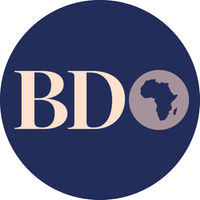
Passengers at the Miritini SGR station in Mombasa. FILE PHOTO | NMG
Summary
- Latest DHL Global Connectedness Index shows that Kenya rose to position 137 in 2020 from 133 in 2017.
- African countries whose connectedness improved in the period are Sudan (+10), Niger (+7), Tanzania (+5) and Gambia (+5).
- Angola (-10), Malawi (-6), Guinea (-5), Madagascar (-5) and Seychelles (-4) saw biggest drops.
Kenya’s global connectedness rose by five places to 133 this year due to an increase in international flows of trade, capital, information and people.
This was boosted by the government’s investment’s on mega-infrastructural projects such as roads and rails. These include the Sh31 billion Thika Road, the Sh327 billion Standard Gauge Railway, the ongoing Sh59 billion Nairobi Expressway and Sh2.5 trillion Lamu Port-South Sudan-Ethiopia Transport (Lapsset) corridor project.
Latest DHL Global Connectedness Index shows that it rose to position 137 in 2020 from 133 in 2017.
The company’s chief executive officer Frank Appel said the virus-induced decline in international connectedness is unlikely to drop below levels seen during the global financial crisis.
“And, in spite of ever-present geopolitical tensions, our report detects no strong evidence of the world economy fracturing along regional lines,” Mr Appel said.
In August, the Kenya Ports Authority (KPA) data showed that the Mombasa port handled a transshipment (goods destined for other ports) traffic of 211,204 twenty-foot equivalent units (TEU) in 2019 compared to 121,577 the previous year.
This pushed the share of transshipment in the overall port throughput to 7.2 percent in 2019 compared to four percent in 2018 and representing an increase in volume of 1.25 million tonnes.
“In the transshipment segment, our dream to become a regional transshipment hub is taking shape” said KPA acting managing director, Rashid Salim.
This reflects gains from the ongoing expansion of infrastructure at the Port of Mombasa as well as the Internal Container Depot (ICD) in Nairobi.
African countries whose connectedness improved in the period are Sudan (+10), Niger (+7), Tanzania (+5) and Gambia (+5).
Angola (-10), Malawi (-6), Guinea (-5), Madagascar (-5) and Seychelles (-4) saw biggest drops.
“With more than half of all of the world’s population growth through 2050 projected to take place in this region, Sub-Saharan Africa will exert a large influence on the long-run future of the people pillar of the index,” the report indicates.
The continent's most connected countries include Mauritius (48), Seychelles (48), South Africa (57), Morocco (62) and Tunisia (72).
“Least connected countries on the continent being Uganda (162), Democratic Republic of the Congo (165), Zimbabwe (166), Guinea Bissau (168) and Burundi (169),” the report shows.
The globe’s most connected countries are the Netherlands (1), Singapore (2), Belgium (3), United Arab Emirates (4) and Ireland (5).
However, effects of Covid-19 on trade vary widely across categories of both goods and services, the study notes.
Despite export restraints imposed by many countries early in the pandemic, trade in medical supplies to fight the virus soared.
“On the other hand, trade in transport equipment and fuels has shrunk much more than overall merchandise trade. Among services, trade in IT and communications services that enable remote work has expanded while services trade that depends on tourism and business travel has collapsed,” the report shows.
It, however, assures that the pandemic will not end globalisation through enforcement of social distancing among people.
“But trade flows have rebounded strongly, capital flows are recovering, and digital information flows have spiked,” it shows.





No comments :
Post a Comment